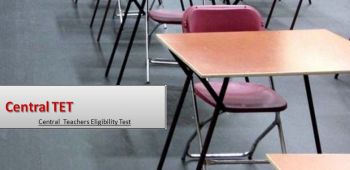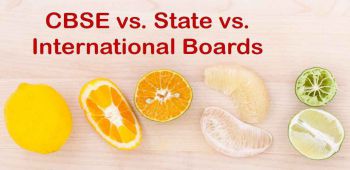Tripura Board Class 11 Syllabus for Economics
Tripura Board of Higher Secondary Education Class XI Syllabus for Economics with course structure are given below.
Unit-1.
DEFINITIONS AND MEANING : (Periods 3)
Economics, Scarcity, Choice, Opportunity Cost, Production, Factors of Production.
Unit-2.
Economics Problems, Economics Systems and the Concepts of Development and Underdevelopment (Periods 5)
a) Three fundamental economic problems to be solved.
b) Economic Systems : Capitalism, Socialism, Communism and Mixed economy : Merits and Demerits
c) Developed economy
d) Developing economy : Less developed economy , Underdeveloped economy
Unit-3. Elementary ideas about Demand, Supply, Cost of Production, Market. (Periods 5)
| a) Utility | Total utility, Marginal utility. |
| b) Demand | Law of demand, demand schedule, demand curve. |
| c) Supply | Law of Supply, Supply schedule, Supply curve. |
| d) Equilibrium | Price and Quantity. |
| e) Market | Competitive Market. |
| f) Cost | Fixed Cost, Variable Cost, Total Cost, Marginal Cost and Average Cost. |
Unit–4.
Concepts of some Macroeconomic Variables: National Income, Consumption, Savings and Investments: (Periods 8)
a) Consumption goods and Capital goods; Final goods and Intermediate goods.
b) Stocks and Flows, Savings and Investment.
c) National income : Gross Domestic Product, Gross National Product, Net Domestic Product, Net National Product, Per Capita National Income.
d) Nominal Gross Domestic Product (NGDP), Real Gross Domestic Product (RGDP), Gross Domestic Product Per Capita (PCGDP), Nominal Gross National Product (NGNP), Real Gross National Product (RGNP), Gross National Product per Capita (PCGNP).
Unit-5: Business Cycles (Periods 2)
a) Concept of Business Cycle
b) Four phases of Business Cycles
c) Characteristics of different phases
Unit-6: Fiscal Policy (Periods 5)
a) Taxes, Direct Tax, Indirect Tax , Central Government Taxes and State Government Taxes ( In Indian Context)
b) Budget – Deficit and Surplus
c) Fiscal deficit, Revenue Deficit
d) Government Expenditure, Expansionary Fiscal Policy, Contractionary Fiscal Policy e) Public debt
Unit-7: Money and Banking (Periods 4)
a) Money Supply, Components of Money Supply in an economy
b) Bank : Commercial Bank, Central Bank
c) Non Bank Financial Intermediaries
d) Type of Deposits : Current Deposits, Term Deposits, Saving Deposits, Fixed Deposits, Recurring Deposits
Unit-8: Business Organizations (Periods 2)
a) Sole proprietor
b) Partnership
c) Joint Stock Companies d) Co-operative
e) Public Enterprise
Unit -9 : International Trade : (Periods 5)
a) International Trade
b) Absolute Advantage
c) Comparative Advantage
d) Gains from trade
e) Tariffs
f) Quotas
g) Export Subsidies
h) Trade liberalization
Unit-10: The Basics of Factor Market (Periods 5)
a) Total Product
b) Average Product of a Factor
c) Marginal Product of a Factor
d) Total Revenue Product
e) Average Revenue Product
f) Marginal Revenue Product
g) Total Factor Cost
h) Average Factor Cost
i) Marginal Factor Cost
STATISTICS FOR ECONOMICS AND INDIAN ECONOMIC DEVELOPMENT
Unit-11 STATISTICS FOR ECONOMICS (Periods 5)
a) Data: Collection of Data, Presentation of Data- Graphical- Tabular method
b) Frequency Distribution: Measures of Central Tendency – Mean, Median, Mode
Unit – 12 INDIAN ECONOMIC DEVELOPMENT (Periods 8)
a) Changing Features of Indian Economy- Sectoral Composition of National Income- Changes over Time during Plan Period.
b) Changes in Demographic Features.
c) Changes in Occupational Patterns. d) Human Development.
Unit – 13: Analysis of the Agricultural Economy of India (Periods 9)
a) Role of Agriculture in India.
b) Cash Crops, Food Crops, Marketable Surplus.
c) Green Revolution in India.
d) Productivity in Agriculture in India.
e) Land Reforms in India.
f) Agricultural Growth in India.
g) Policy of Food procurement in India.
h) Public Distribution System.
i) Mahatma Gandhi National Rural Employment Guarantee Act.
j) Economic Reforms in Agriculture.
Unit-14: Analysis of the Industrial economy of India (Periods 8)
a) Role of Industry in India.
b) Industrial Growth and Stagnation in India.
c) Public Sector, Private Sector, Joint Sector, Role of Public Sector in India.
d) Role of Small Scale Industries in India.
e) Changes in Industrial Policy during Plan Period- Economic Reforms, New Industrial Policy.
f) Liberalisation, Privatisation, Globalisation, Impact of Economic Reforms on Industries in India.
Unit – 15: Indian Economy- A comparison with neighbouring Countries (Periods 2)
a) India and Pakistan
b) India and China
c) India and Japan
Unit - 16: PROJECT (Periods 15)
Project may be based on Field Works / Secondary Data Some suggested issues :
1) Project based on land holdings, crop patterns, occupational patterns, Food procurement of village.
2) Changes in Sectoral Composition of State / National Income.
3) Issues on household consumption, expenditure.
4) Changing prices of vegetable (selected).
5) Consumer awareness amongst households.
6) Demographic structure of villages.
7) Poverty & unemployment Schemes (ongoing programmes in the areas.)
8) Any other relevant topic.
You can also check here:




















Comments